Philodendron Birkin is a beautiful plant that can be found all over the world. It’s easy to grow and doesn’t need too much care, but it does require some attention every once in a while to keep it happy and healthy. If you’re looking for information on how best to take care of your Philodendron Birkin, this article will give you everything you need!
Philodendron Birkin Care Guide Overview
- How To Plant (when & where)
- How To Grow (staking, watering, fertilizing, humidity, mulching)
- How To Trim And Prune
- How To Pot And Repot
- How To Propagate (when & how)
- And Pests and Diseases, Plant Species, Companions, Toxicity
Characteristics
- Scientific name and common names: The scientific name for this plant is Philodendron Birkin. It is also known as the Twinleaf Philodendron or Pahra Philodendron.
- Origin: The Pahra Philodendron originates from Thailand.
- Indoor or Outdoor plant: The Pahra Philodendron is a plant that can be grown indoors or outdoors in a temperate climate.
- Height and Structure: The Pahra Philodendron can grow 10ft tall with a spread of 4ft.
- Temperature: The ideal temperature for the Pahra Philodendron is between 65 and 80 degrees Fahrenheit.
How To Plant a Philodendron Birkin
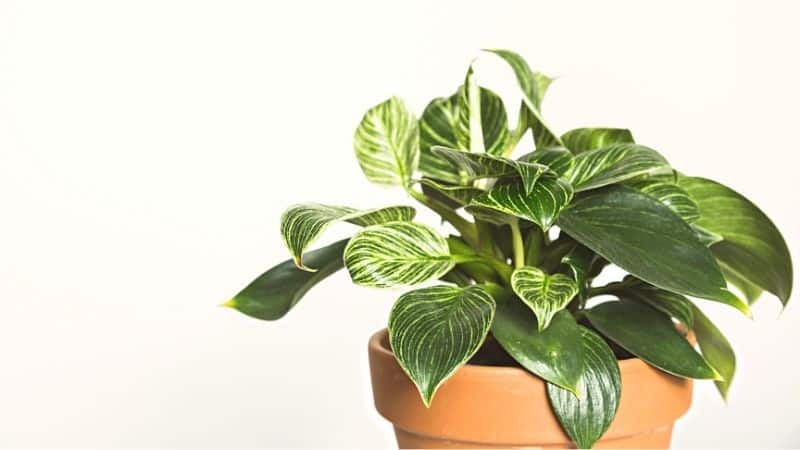
Planting Time
The best time to plant your Philodendron is around Spring. Make sure you leave it in a well-lit area and make sure the soil remains moist at all times. It is best to plant your Philodendron in a flowerpot and not the ground.
Spacing
Spacing is an essential part of growing a healthy Philodendron. This plant needs to grow, and so you should at least leave enough room for it to move around as it begins to grow, if not more. You should also make sure you plant your Philodendron near a window or an area of your home that gets sunlight. The more sun it gets, the better for its health.
Light Requirements
How much light does a Birkin need? Philodendron Birkin need plenty of light to grow. If there isn’t a window where your plant can get enough sunlight, you should buy a lamp for it. Make sure the lighting is close enough so that the plant can receive an ample amount of sun every day. It is advised that you avoid buying a Philodendron Birkin if there is no source of light or sun nearby.
Soil
Philodendron Birkin loves soil that is rich and moist. However, it would be best if you stayed away from planting it in wet and soggy soil. The best texture for the soil would be just right for this plant, not too dry or too wet either way. Please make sure you add fertilizer to your Philodendron at least every other season to keep it healthy and growing.
How To Grow a Philodendron Birkin
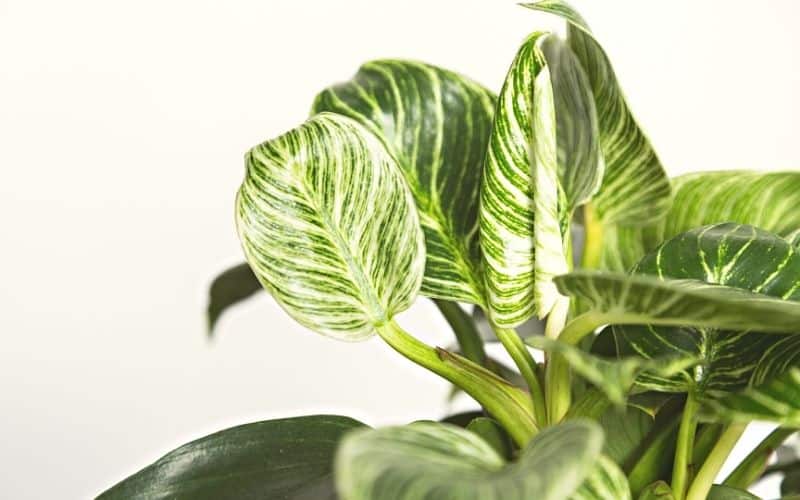
Growth habits
This plant has a very high rate of growing new leaves. The Philodendron will continue to grow and produce newer branches that have more leaves along with them. As a result, you can prune your plant if it becomes too large or spreads out too much for your liking.
Staking
When the leaves of your Philodendron Birkin begin to droop, you should take care of this problem by staking the plant to help it grow strong and healthy. It would help if you used twigs or sticks that are similar in size to the stem. Then tie them around using a string or anything similar. This will keep your plant’s branches straight and growing strong.
Watering
Watering is vital for this plant because it will make the soil moist and wet. You should make sure you do not overwater these plants; otherwise, they might rot. Check if your Philodendron requires more water by pushing your finger to the soil. If the soil feels dry, then you should start watering them until it reaches a moist state.
Fertilizing
It would be best if you fertilized Philodendron at least every other season to make sure it is healthy and growing. You can buy fertilizer from any gardening center or online store that sells plants for this purpose. Mix the required amount of fertilizer you need for your plant with water and then give it to them as a form of nourishment.
Repotting
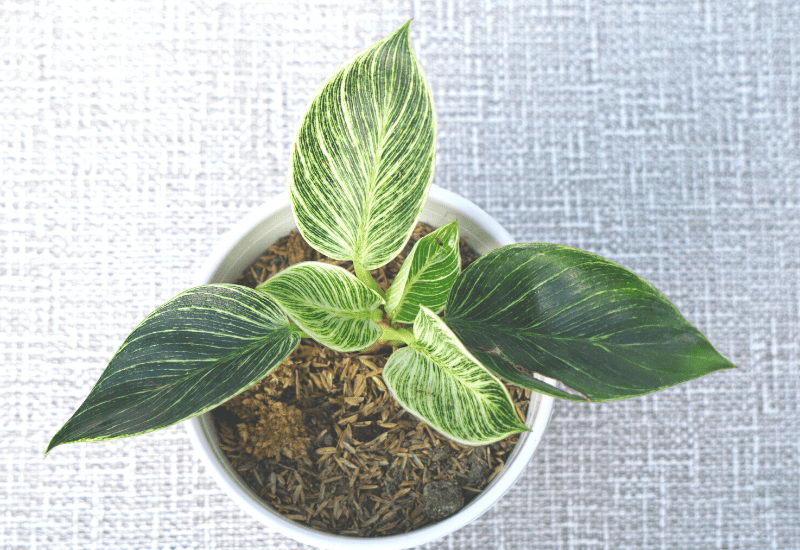
You should repot your plants every once in a while, especially when the roots become too large for their pot. To report them to follow these steps:
Steps for repotting Philodendron Birkin
- Place your plant on an elevated surface with enough space around it
- Remove the excess soil from around your plant and discard it
- Then, take a new pot with enough space for the roots to fit in comfortably
- Cut a hole at the center of the new pot that has been filled with soil
- Place your plants on top of this hole and then add more soil around it
- Water your plant until the soil becomes moist and allow it to dry before watering again
Humidity
Your plant should remain between 40-100% humidity. If you don’t supply your plant with enough humidity, then it will dry out and wilt. You can buy a humidifier or ask around if anyone has one they might be willing to lend you to make sure your Philodendron Birkin is getting the proper amount of humidity it needs.
Temperature
The temperature your plant requires will depend on the type of plant you have. Your Philodendron Birkin prefers warmer temperatures ranging from 73-86 F and does not like cold weather at all (the 50s and 60s Fahrenheit). It is best to avoid exposing your plant to extreme temperatures to keep it healthy.
Mulching
Mulching keeps your soil moist and helps it retain moisture for longer periods. By mulching your Philodendron, you essentially prevent the plant from drying out due to the hot sun or cold weather conditions. You can use compost, grass clippings, bark chips, or anything similar that will help provide an even layer of mulch. For effective mulching, add approximately 2 inches of mulch to your plant’s surface.
De-leafing
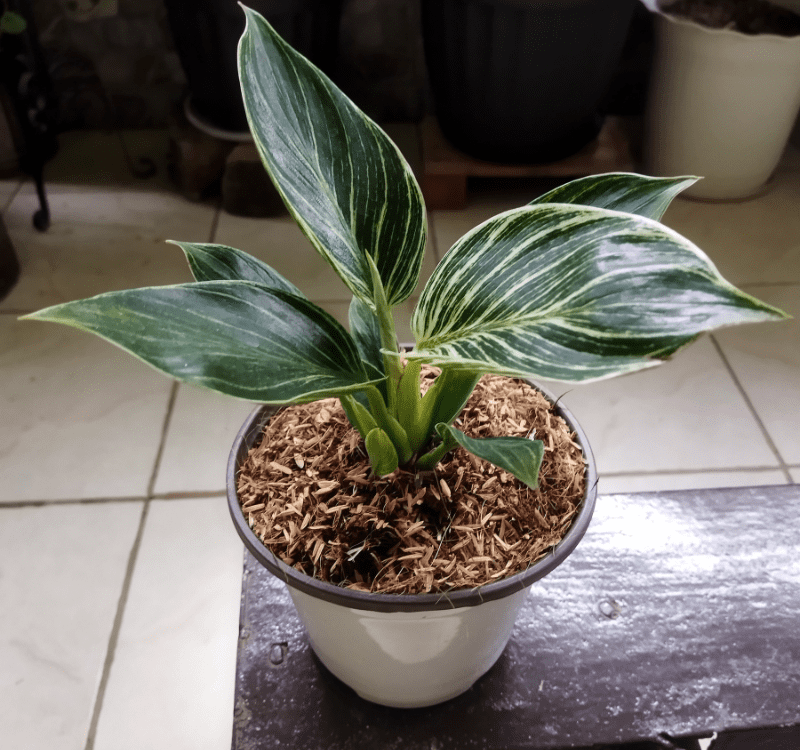
When the leaves on your Philodendron start curling inwards, you should remove them right away because it is a sign that there is a problem with that specific leaf. You can use a pair of sharp scissors and cut the leaf off as close to its base as possible. If you have a plant with leaves that are starting to yellow, you should remove those as well because it can be a sign of severe dehydration or other problems in your plant’s roots.
Pinching
It would be best if you pinched any stem that has grown taller than the rest. This will encourage your plant to grow horizontally, which is essential for healthy plants. The best time to pinch is during Spring.
Trimming and pruning
You should trim your plant when it has too many leaves clustered at the bottom. You can use a pair of pruning shears to trim your plants to give them better air circulation and prevent rotting around the stem.
Steps for trimming Philodendron Birkin
- Cut the leaves that are clustered in one location to encourage healthy growth all around your plant
- Use pruning shears to cut each leaf off individually so you do not damage other parts of your plant when doing this
- Once you have removed enough leaves, your plant should look a lot healthier, and the new growth should be closer to the center of your plant, where there is more light
Philodendron Birkin Propagation
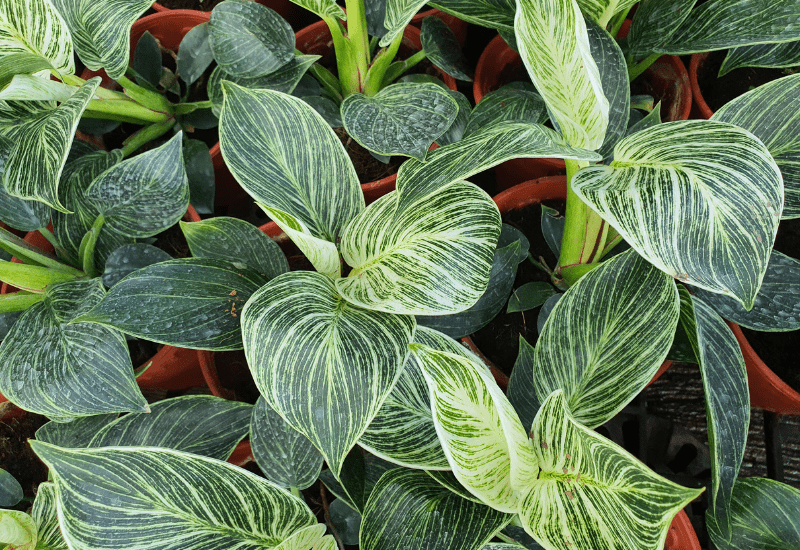
You can use pieces of leaves to propagate new plants through rooting. First, you should remove the lower part of the leaf that contains the roots then dip it into some water or root hormone (to prevent your plant from rotting). Once you have dipped the base in water/root hormone, make a small slit with sharp scissors and place it into a pot with moist soil. Keep the leaf slightly covered with a plastic bag until you see new growth starting to grow from it.
Divide and Transplant
When you plant your Philodendron Birkin in a small pot, it is time to check for signs of overcrowding once it begins growing vertically. You should transplant it into a larger pot if too many leaves are clustered at the top of the plant. When you divide your plants up, you should use new pots to avoid overcrowded and grow into healthy plants.
Pests and diseases
Some many different diseases and pests can affect your Philodendron Birkin. Most of these problems can be avoided by keeping your plant healthy, so it is crucial to prevent these problems from happening by providing the best requirements for your plants. The following list contains some of the most common pests and diseases that affect Philodendron plants:
Algae
If algae are growing on your leaves, you should wash them off immediately to prevent the growth of bacteria. If you cannot wash it off indoors, take your plant outdoors and provide plenty of water for at least 30 minutes before allowing it to dry naturally.
Fungus
Different types of fungus can affect the Philodendron, such as leaf rot and root rot. The easiest way to prevent this problem is by providing the best care for your plant so that it does not get any fungus or bacteria in it in the first place.
Powdery Mildew
Powdery mildew is a white substance that forms on the underside and top white. However, this is usually caused by fluoride in tap water, so it is recommended that you use bottled water of your leaves and cause them to turn yellow. You should remove the infected leaves and provide enough sunlight for your plant.
Fluoride
Fluoride poisoning can cause your plant to lose its color and appear to be wilting. It would help if you only used purified or bottled water to provide your plant with the best conditions possible to prevent this problem.
Spider mites
If you notice little white spots on the underside of your leaves and these spots turn yellow or brown, then this means that you have spider mites. You should take a cloth and wipe off the tops and undersides of the leaves to remove them from your plant.
Scales
Scales can cause tiny holes in your leaves, and if you notice any areas of your plant that are no longer green but brown or black instead, this means that you have scale insects. To remove these pests, wipe the affected area with a damp cloth to help prevent them from spreading onto other parts of your plant.
Aphids
Aphids can affect your plant by sucking out the sap and causing the leaves to turn yellow. The best way to get rid of these pests is by wiping them off with a damp cloth or taking your plant outside and spraying it with water.
Slugs and snails
Slugs and snails can cause huge holes to form in your leaves by eating through them. It would help if you lay down some copper tape or sprinkle used coffee grounds around the base of your plant, as this will deter these pests from coming near.
Whiteflies
Whiteflies are tiny white flies that feed on the underside of your leaves, and they can be seen at night. If you notice this pest, you should take your plant outdoors, turn off the light and spray it with water to help get rid of these pests.
Philodendron Birkin Species
The Philodendron Birkin is a beautiful plant that can be an exciting addition to any home. This plant is relatively new and was discovered in Thailand back in 1984; however, it is not widely available yet. It belongs to the genus Philodendron in the family Araceae. This beautiful plant can have green or yellowish leaves with a glossy, leathery texture that contains small hairs to help resist water loss.
It is native to Thailand but can be found throughout Japan, China, and other southeast Asian countries. Another member of the same genus is the Philodendron Selloum which originates from Brazil. The leaves of this species are typically a dark green color with shades of silver, grey and purple hues on the underside.
Companions
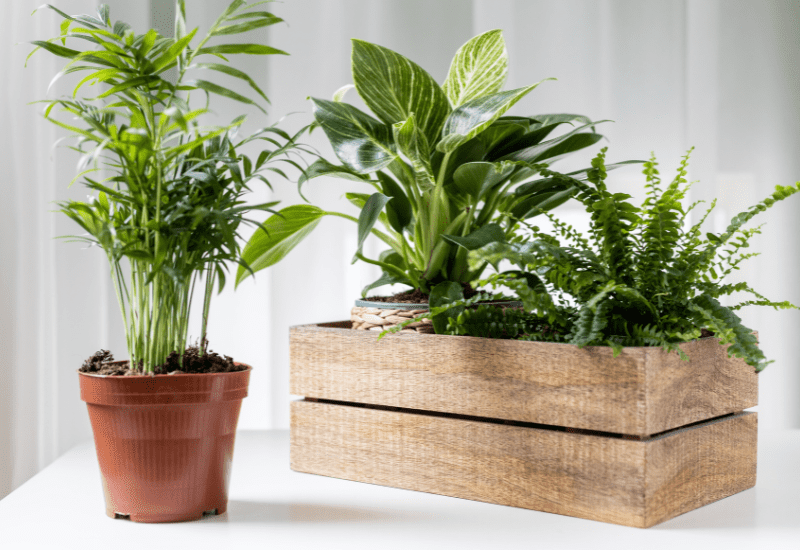
Philodendrons are typically grown by themselves since they can grow quite large and become root-bound. However, if you want to grow them with another plant, it is recommended that you place them in the same area so they have plenty of room to spread out. However, it would help if you did not place them near plants that require lots of water as these can suffocate them.
Toxicity
Philodendrons are not known to be toxic to people or pets. However, the sap from a few species can cause an itchy rash when touched. This typically occurs when you have direct contact with the sap from the plant and is rarely seen in humans. If ingested, this plant can cause abdominal discomfort.


